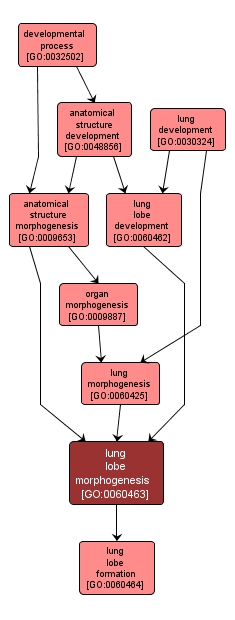GO TERM SUMMARY
|
| Name: |
lung lobe morphogenesis |
| Acc: |
GO:0060463 |
| Aspect: |
Biological Process |
| Desc: |
The process by which the anatomical structures of a lung lobe are generated and organized. Morphogenesis pertains to the creation of form. A lung lobe is a projection that extends from the lung. |
|

|
INTERACTIVE GO GRAPH
|














